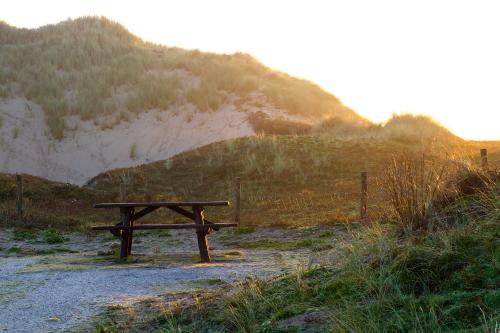The old and damp soil of the Coepelduynen, between Noordwijk and Katwijk, provides the ideal breeding ground for waxcaps: colorful mushrooms with a shiny cap. This area is perfect for a leisurely stroll. There are two dune valleys, and the variety of dune grasslands, shrubs, and forest with special plants and animals makes this a diverse area to explore.
.time-to-visit { margin-bottom: 1.5em; padding-left: 30px; background: url(/sites/default/files/2025-03/timetovisit.svg) no-repeat 0 0px; background-size: 20px; }Potato cultivation by the sea
The Coepelduynen is a small but special area. It is a characteristically varied dune landscape, also known as the 'sea villages landscape'. In the past, nets were dried here and the inhabitants of the sea villages laid fields for potatoes and meadows for livestock in the dune pans. Today, the Coepelduynen form a diverse natural area, with many rare plant species, including uncommon mosses and mushrooms.

The most beautiful part, in my opinion, is the Coepelduynen with its sand drifts. There, you can still see how the dunes were once formed: through an interplay of sand and wind. Broomrape, dogsbane, night-flowering catchfly, and eyebright grow there. I often encounter a roe deer or fox.
Tim Fransen, forest ranger in charge of Hollands Duin
